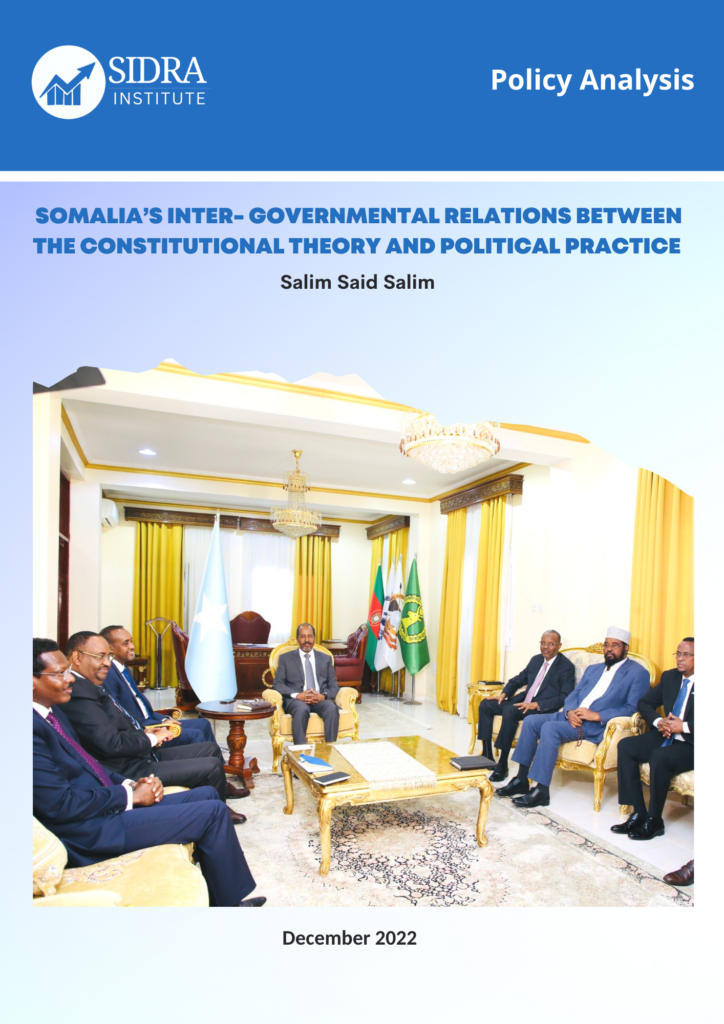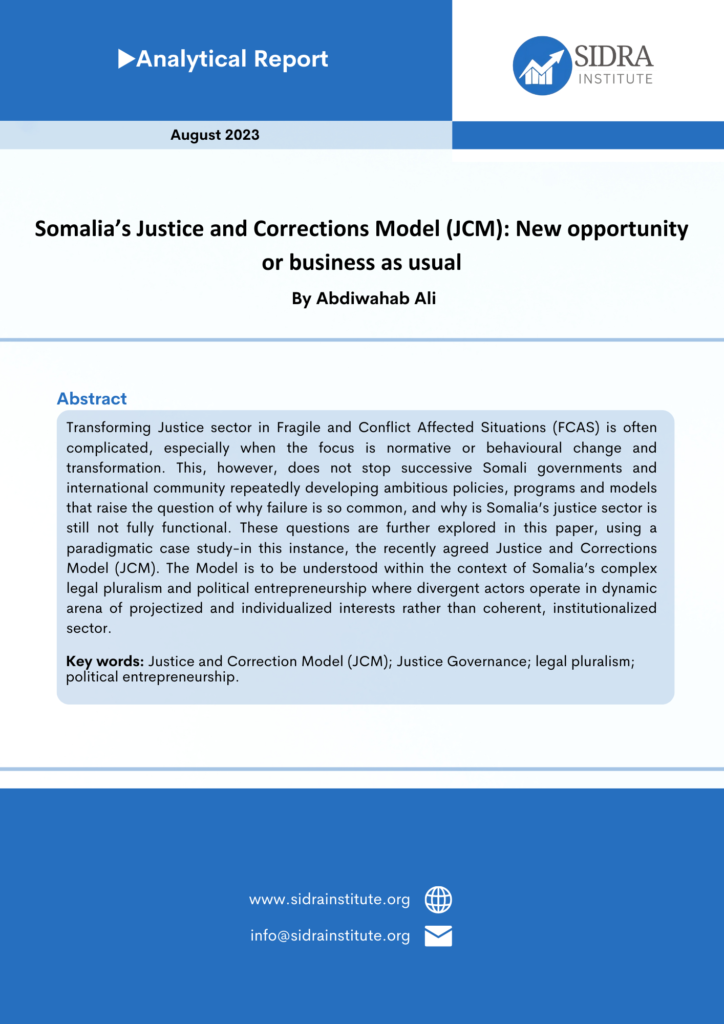This paper provides a comprehensive analysis of Somalia’s bicameral parliamentary system, focusing on the historical context, composition, functions, and the effectiveness of the two houses of Parliament, namely the House of the People and the Senate, as per the Somali Provisional Constitution. The historical overview traces the evolution of the Somali Parliament from the colonial era to post-independence and the military rule. It further delves into the current state of affairs after 1991, examining the challenges faced in forming a bicameral legislature in a fragile state like Somalia.
The paper highlights the significance of bicameralism in ensuring representation and checks on government power. It explores the specific roles and responsibilities of each house, emphasizing the House of the People’s primary role in the legislative process and oversight of the executive. While the Senate is designed to represent the interests of Federal Member States, its effectiveness in doing so is analyzed in light of the National Consultative Council’s growing influence.
Additionally, the paper discusses the challenges faced by the Somali upper house in truly representing the federal member states and promoting intergovernmental cooperation. It sheds light on the complexities arising from power-sharing formulas based on clan representation and the implications of direct negotiations between the federal government and member states.
In conclusion, the paper provides a critical analysis of the current status of Somalia’s bicameral parliament, highlighting the need for enhanced representation of federal member states and greater cooperation between the two houses to strengthen the country’s democratic and federal structures. It offers insights into potential improvements and reforms to ensure a more effective bicameral system in Somalia’s governance.



